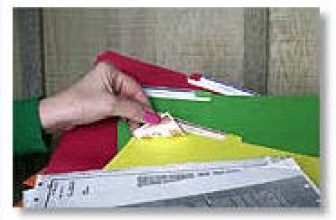
Practical case of RFID technology in Fudan University Museum
[ad_1]
RFID conducts non-contact two-way data communication through radio frequency identification. This means that after placing electronic tags on museum collections in a suitable manner, the inventory statistics and information management of the collections can achieve the goal of remote and non-contact. In other words, after the museum digitizes the objects and their information, through RFID technology, combined with the original collection information digital management system, we finally make the physical collection and its information integrated again.
In the Museum of Fudan University, we limited the role of the chip to a very simple range, so we chose a 915MHz passive RFID electronic tag. Through the anti-metal encapsulation method, each collection is written with its own unique identification-the collection total. Registration number. At the same time, select the ultra-high frequency RFID reader (13.56MHz), built-in the museum collection management software led by Professor Hongjing Chen, collect and create digital information of related collections through student practice, and complete the application example of radio frequency identification technology in the warehouse.
What does this improvement mean for collection managers? In the case of the Fudan University Museum, first of all, the collection manager does not have to run back and forth between the shelf of the physical collection and the desk with a pen and paper in hand, and only needs to walk around the warehouse with the RFID collection management machine in hand. Even if you need to change the information description of the collection, you only need to enter the identity information (general registration number) of the single collection in the RFID collection management machine, walk directly to the collection storage place as shown in the storage shelf information, and rewrite it The total registration number is sufficient. The rest of the information changes can be carried out in the collection information database connected to the collection management machine. The synchronization of the data ensures the unique identification between the information in the RFID collection management machine and the electronic tag, and realizes the connection between the physical collection and its information. Be one at any time.
Secondly, in the work of inventory counting, even if witnessing is one of the requirements for the preservation of the collection, the collection administrator can be free from the intense digital verification and manual inventory. In the case of not touching the physical objects, the number of collections can be counted through the reader of the RFID collection management machine. Check the difference between the number of collections on each shelf and the records of the collection management information system according to the total registration number of the collection, easily obtain the real-time collection shelf information or the content that needs to be changed and noticed, and avoid the risk of damage to the collection due to contact and movement . The labor of quantitative statistics has long been realized in the collection information management system that has been practiced for many years, and the corresponding manual inventory work of the collection is greatly reduced with the help of the RFID collection management machine. Because for most collections with accurate discharge information, what the collection keeper does is just hold the RFID collection management machine and scan it in the air before placing the shelves, and the management machine can automatically check the information. While counting the number of collections, accidental errors in shelf information can also be found through the automatic records of the RFID collection management machine. This is undoubtedly like the sound of nature to a museum with a huge collection. It is of great significance to the work of museums that focus on protection and use rational use as the goal.
Thirdly, for the selection and calling of similar collections, the RFID management machine can be used to accurately and conveniently search for a single collection to achieve precise point-to-point retrieval. For example, in a large number of paintings and calligraphy works with similar appearance, the RFID collection management function can prompt the selected target through buzzing of different lengths (electronic tags are placed in the head of the painting and calligraphy vertical axis), and direct selection can avoid the blindness of opening each for review Convenience behavior. Compared with the digital practice of collection information management system for more than ten years, the remote, non-contact collection management method obviously draws a blueprint for the Internet of Things era for museum warehouse work.
Article 4 of the “Cultural Relics Protection Law” clearly stipulates: “Cultural relics shall implement the policy of protection first, rescue first, rational use, and strengthened management.” How to implement the concept of protection first in the collection management process? The non-contact working method is a major innovation to improve the safety of collection management. The realization of this method depends on the further development of the key technology of the Internet of Things —RFID technology, and in particular, it needs to further increase its readable distance. The ultra-high frequency RFID technology can theoretically provide high-distance high recognition capability, and this technology can greatly reduce the frequent contact with the collection in the daily management of the museum and realize the non-contact of the collection through the reasonable placement of the electronic tag. Precise management. Using new technologies to change working methods and to realize the first concept of protection that people in the cultural and museum circles have been calling for by new working methods is precisely the huge advantage of RFID technology in museum work.
The Auto-ID China Laboratory of Fudan University was established in 2002, relying on the State Key Laboratory of Application Specific Integrated Circuits and Systems of Fudan University, and is the only member unit of the Auto-ID Laboratory in China. Auto-ID Lab was first established in MIT in 1999. It has six member units around the world. It is an alliance of research units, specializing in automatic identification, smart objects and EPC (Product Electronic Code) systems. Research, development and promotion.
[ad_2]



